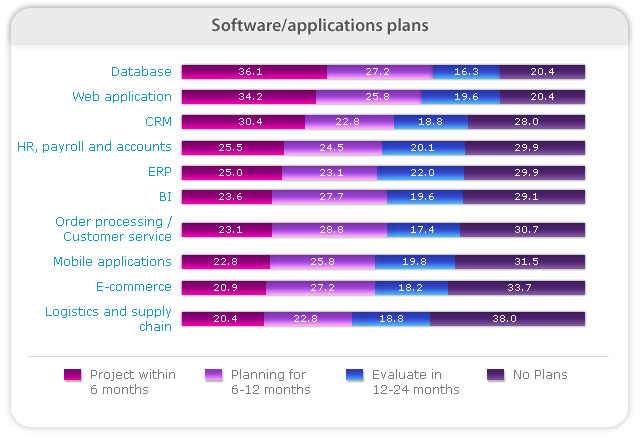Web apps grow in significance

The impact of Web apps in the enterprise space has grown over the last two years, with the majority of enterprises making plans to embark on Web app implementations within the next 12 months.
According to ZDNet Asia's IT Priorities 2010 survey, which polled 438 IT decision makers across the region, 60 percent of respondents planned to embark on a Web app implementation. About half of that figure said they would be ready to launch a scheduled project within six months, while the remaining half planned to kickstart an implementation within the next six to 12 months.
Last year year's survey revealed that Web apps had cracked the top 10 IT priorities list for the first time. In particular, Web development platforms such as Adobe Air and Microsoft's Silverlight, were identified as attractive cross-platform environments to IT managers. Silverlight also enjoyed exposure during its use in high profile events such as NBC's coverage of the 2008 Beijing Olympic Games.
In May last year, for instance, Citrix unveiled an application store called Dazzle that allows users to search through, select and buy business software products on their desktops.
Tweaking apps to fit business processes
According to the ZDNet Asia survey, interest in business apps ranked third in the list of top IT priorities, after business management and IT management. App development made it to the list at seventh position, with Web apps ranked 10th.
The survey also revealed respondents saw the need to align enterprise software to business processes as a major consideration, where over 85 percent said improving apps to better fit business processes was a key issue.
The need to improve processes was determined to be a larger emphasis for medium- and large-sized organizations, with smaller organizations preferring to pay attention to the role of software in aiding information flow and access.
Developing and delivering applications, however, was expected to present a significant IT challenge for the bulk of respondents. Some 65.9 percent highlighted this as a major challenge, while 25.4 percent ranked it a minor challenge. The rest were not concerned, with 5.6 percent saying it was "not important" and 3.1 percent never having thought about it, according to the survey.
Barnes said the findings echoed the concerns of businesses in tough economic climates, where organizations are harder pressed to better make use of existing IT assets, including business software.
With new IT investments having faced restrictions over the last 18 months, the backlog of upgrade requirements will result in organizations uncovering process issues and inefficiencies that must be addressed as the economy improves, he noted.
These issues must be ironed out for companies to take advantage of new business opportunities, he added.
Most importantly, however, Barnes recommended that business process owners or domain-specific experts must be involved in the process of selecting and implementing a new application, in order to ensure the project is not dominated by IT staff with little specific process expertise.
